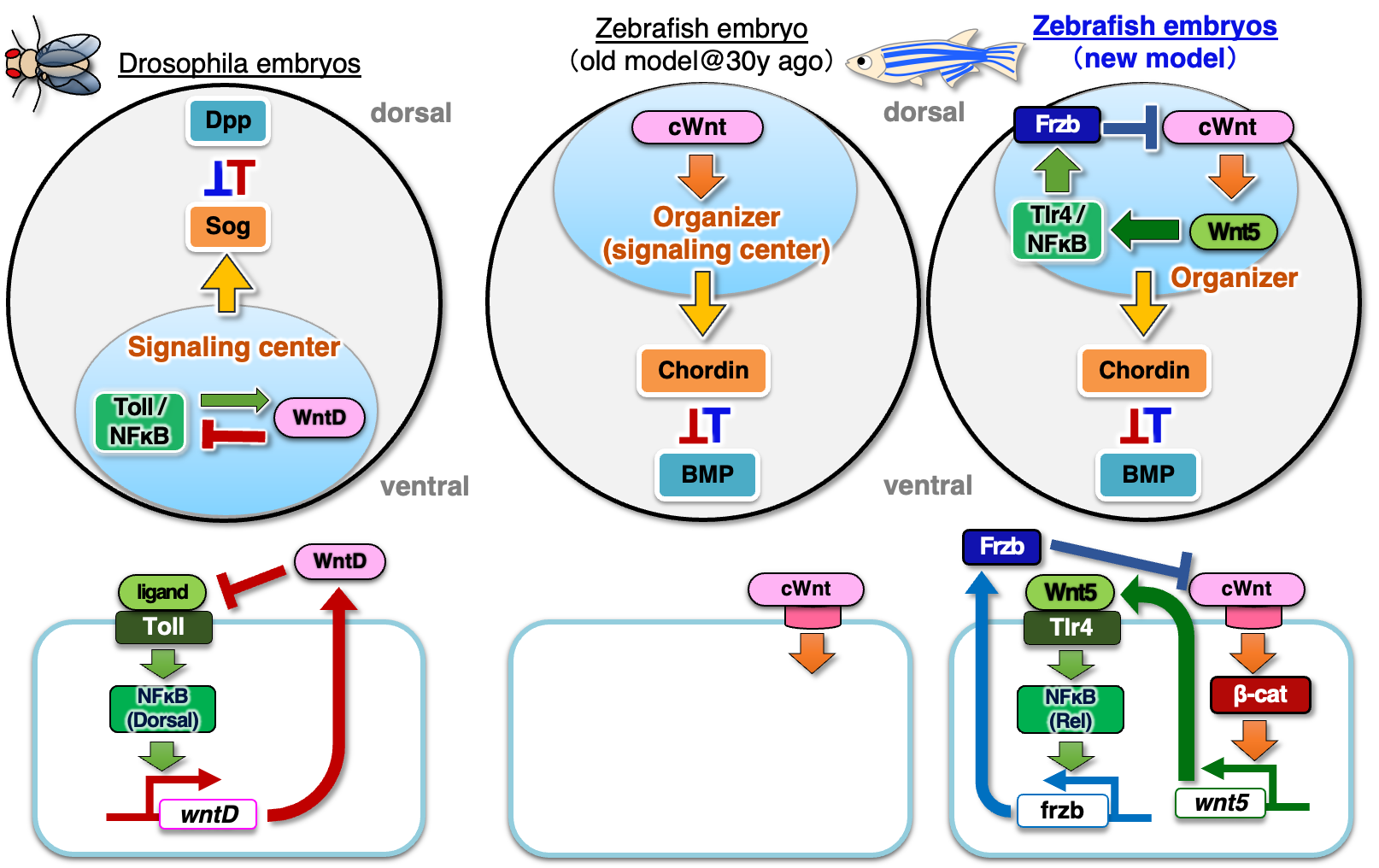Zebrafish dorsal organizer size is determined by a Wnt-Tlr4/NFκB negative feedback loop (Ishitani Lab, in Nat Commun)
In vertebrate embryos, the canonical Wnt ligand primes the formation of dorsal organizers that govern dorsal-ventral patterns by secreting BMP antagonists. In contrast, in Drosophila embryos, Toll-like receptor (Tlr)-mediated NFκB activation initiates dorsal-ventral patterning, wherein Wnt-mediated negative feedback regulation of Tlr/NFκB generates a BMP antagonist-secreting signalling centre to control the dorsal-ventral pattern. Although both Wnt and BMP antagonist are conserved among species, the involvement of Tlr/NFκB and feedback regulation in vertebrate organizer formation remains unclear. By imaging and genetic modification, we reveal that a negative feedback loop between canonical and non-canonical Wnts and Tlr4/NFκB determines the size of zebrafish organizer, and that Tlr/NFκB and Wnts switch initial cue and feedback mediator roles between Drosophila and zebrafish. Here, we show that canonical Wnt signalling stimulates the expression of the non-canonical Wnt5b ligand, activating the Tlr4 receptor to stimulate NFκB-mediated transcription of the Wnt antagonist frzb, restricting Wnt-dependent dorsal organizer formation.
This article was published in Nature Communications, on November 8 (Thu.).
Title: “Determining zebrafish dorsal organizer size by a negative feedback loop between canonical/non-canonical Wnts and Tlr4/NFκB”
Authors: Juqi Zou , Satoshi Anai , Satoshi Ota , Shizuka Ishitani , Masayuki Oginuma, Tohru Ishitani
Links
- Home
- Achievement
- Research Activities
- Zebrafish dorsal organizer size is determined by a Wnt-Tlr4/NFκB negative feedback loop (Ishitani Lab, in Nat Commun)








